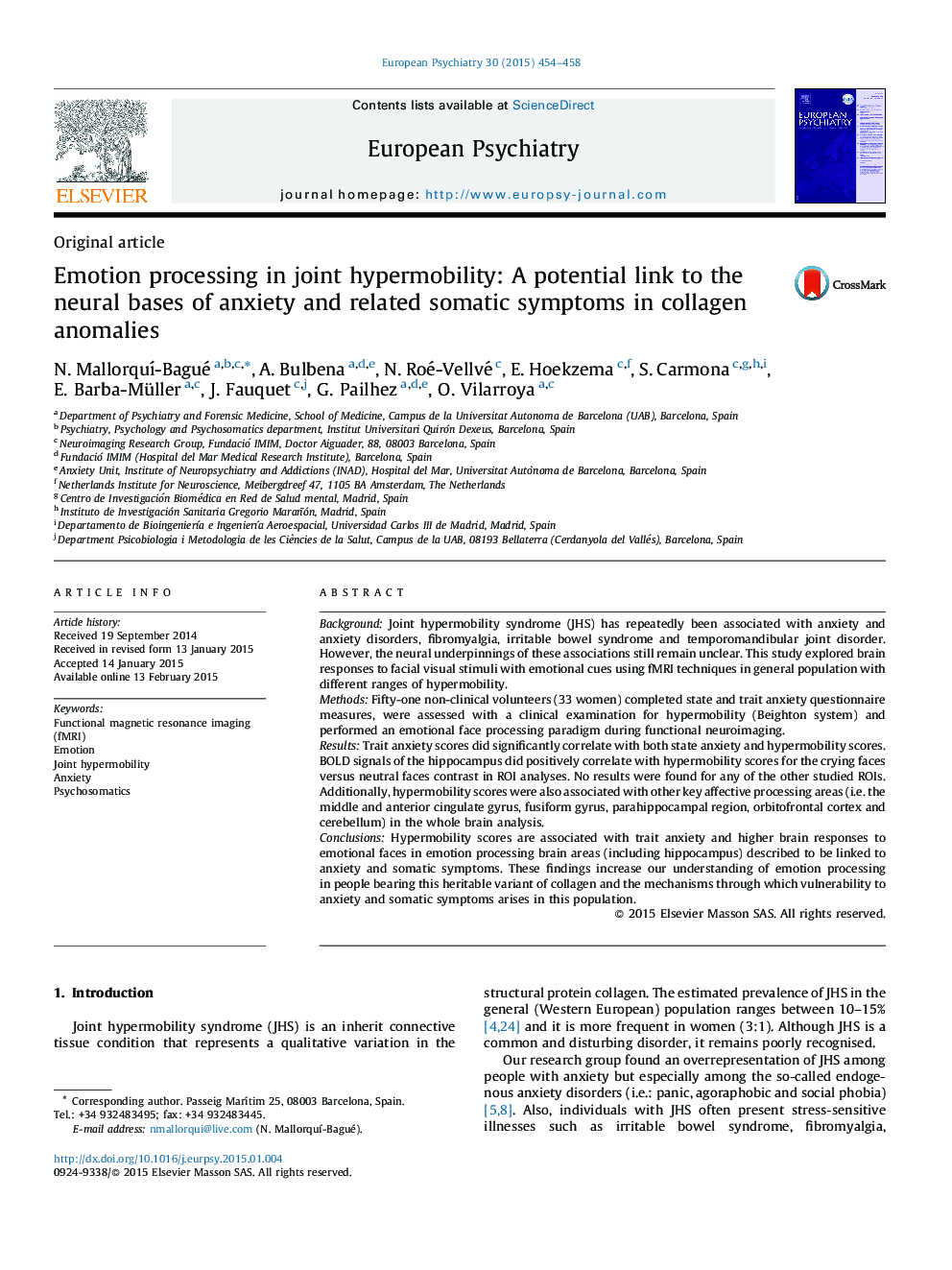| کد مقاله | کد نشریه | سال انتشار | مقاله انگلیسی | نسخه تمام متن |
|---|---|---|---|---|
| 4183722 | 1277285 | 2015 | 5 صفحه PDF | دانلود رایگان |
BackgroundJoint hypermobility syndrome (JHS) has repeatedly been associated with anxiety and anxiety disorders, fibromyalgia, irritable bowel syndrome and temporomandibular joint disorder. However, the neural underpinnings of these associations still remain unclear. This study explored brain responses to facial visual stimuli with emotional cues using fMRI techniques in general population with different ranges of hypermobility.MethodsFifty-one non-clinical volunteers (33 women) completed state and trait anxiety questionnaire measures, were assessed with a clinical examination for hypermobility (Beighton system) and performed an emotional face processing paradigm during functional neuroimaging.ResultsTrait anxiety scores did significantly correlate with both state anxiety and hypermobility scores. BOLD signals of the hippocampus did positively correlate with hypermobility scores for the crying faces versus neutral faces contrast in ROI analyses. No results were found for any of the other studied ROIs. Additionally, hypermobility scores were also associated with other key affective processing areas (i.e. the middle and anterior cingulate gyrus, fusiform gyrus, parahippocampal region, orbitofrontal cortex and cerebellum) in the whole brain analysis.ConclusionsHypermobility scores are associated with trait anxiety and higher brain responses to emotional faces in emotion processing brain areas (including hippocampus) described to be linked to anxiety and somatic symptoms. These findings increase our understanding of emotion processing in people bearing this heritable variant of collagen and the mechanisms through which vulnerability to anxiety and somatic symptoms arises in this population.
Journal: European Psychiatry - Volume 30, Issue 4, June 2015, Pages 454–458
